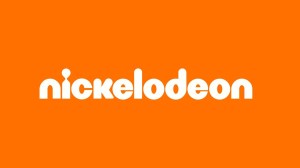Star Trek: Discovery will soon return with a new season, a new Spock, and new central mystery. Could it somehow be connected to a different Spock and to the Kelvin timeline of the Star Trek movie franchise?
Videos by ComicBook.com
The Star Trek: Discovery Season Two trailer released at San Diego Comic-Con revealed that Mr. Spock is missing. Spock took a leave of absence from his duties as the USS Enterprise‘s science officer to investigate a mystery playing out across space. It is Spock’s absence and this mystery that motivates Captain Christopher Pike to seek out and take command of the USS Discovery.
So far, fans don’t know much about this mystery that Spock is investigating. The trailer reveals that red-colored phenomena are appearing throughout the galaxy. For some reason, Spock feels it is necessary for him to investigate these red spots on the galactic map. According to a line from Michael Burnham, this is a mystery that spans space and time.
There was another Star Trek story that involved spacetime, the color red, and Spock. That story played out in 2009’s Star Trek. In an attempt to save the planet Romulus from a supernova, Spock used a substance called “red matter” to create a black hole. The plan failed, and Spock’s ship, as well as the Romulan mining vessel Narada, were sucked into the black hole.
Spock traveled over a century backward in time before emerging from the black hole. The Narada went back in time even further, destroying the USS Kelvin, killing George Kirk, and creating a new timeline.
The Narada waited for years in this “Kelvin timeline” for Spock to emerge. Once Spock did, Captain Nero forced Spock to watch as the red matter was used to destroy Vulcan.
We know that red matter can destroy planets. We know that it can create a black hole that allows for time travel. We know that Spock’s use of red matter created the Kelvin timeline. What if that wasn’t the only effect?
We know that Star Trek exists in a multiverse. There is the prime timeline, where every Star Trek story from Star Trek: The Original Series through Star Trek: Nemesis took place. There’s the Kelvin timeline, which is the setting of Star Trek, Star Trek Into Darkness, and Star Trek Beyond. There’s also the mirror universe, where select episodes of various Star Trek television series have taken place. We know from episodes like “Yesterday’s Enterprise” that other timelines can be created. We also know from episodes like “Parallels” that some exist alongside the ones Star Trek fans are most familiar with.
What if Spock’s use of red matter to create a black hole had further reaching, more widespread consequences? Could the red matter is responsible for the red phenomena popping up in Star Trek: Discovery Season Two?
If the red matter is causing strange effects across space and time, then could that could explain some of Star Trek: Discovery‘s continuity? Co-creator/showrunner Alex Kurtzman has stated that Season Two will clarify Discovery’s place in Star Trek canon.
“I think with Enterprise‘s arrival in the finale we recognize that the audience has a lot of questions about our synchronicity with the original series, which really means or synchronicity with canon,” Kurtzman said. “So the promise of the Enterprise holds the answers to a lot of those questions, including Spock’s relationship with his half-sister who he’s never mentioned. Which does not necessarily mean you’re going to see Spock, just that we owe an answer to that question.”
There are some problems with this theory. Kurtzman’s own quote suggests that the Enterprise itself will help explain a lot fo the continuity issues, so the red matter idea isn’t necessary. There’s also the extra coordination involved in using elements from the films. And yet, Kurtzman co-wrote two of the last three Star Trek films, so if anyone could make bridging that gap as easy as possible, he seems like the person to do it.
Admittedly, we have our tinfoil hates on here, but what do you think? Could there be a connection between Star Trek: Discovery Season Two and the Kelvin timeline Star Trek movies? Let us know in the comments!
The first season of Star Trek: Discovery is available to stream in its entirety on CBS All Access in the U.S., through CraveTV in Canada and through Netflix in other international markets.
Star Trek: Discovery Season Two is now filming in Toronto and will premiere in early 2019.








